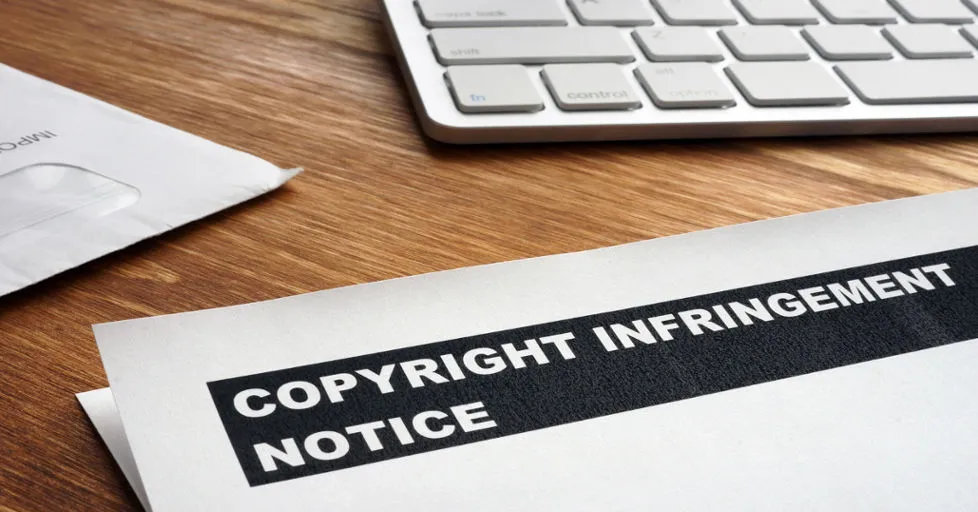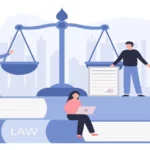Copyright infringement poses a serious threat to creators and organizations that depend upon monetizing intellectual property. Protecting creative works under copyright law ensures creators’ rights while promoting innovation and fair use. This article provides a comprehensive guide on understanding, addressing, and preventing copyright infringement, with specific emphasis on issuing and responding to copyright infringement notices.
Understanding Copyright Infringement
Copyright infringement can be defined as the unauthorized use, duplication, circulation, or display of copyrighted works, violating the exclusive rights assigned to the copyright holder. The legal framework for addressing copyright infringement is established under the Copyright Act, 1957, which defines and protects the rights of creators in India. This legislation encompasses a wide range of intellectual property, including literary, artistic, musical, and cinematographic works, ensuring their creators retain control over their use and dissemination.
International standards, such as the Berne Convention for the Protection of Literary and Artistic Works1, further reinforce the protection of copyrighted material by harmonizing copyright laws across member countries. Common examples of infringement include unauthorized sharing of digital content on platforms, use of copyrighted images without attribution, and replication of music or films without proper licensing.
It is essential to differentiate copyright infringement from other versions of IP violations. For instance, trademark infringement pertains to the unauthorized use of brand identifiers, patent infringement involves the unapproved use of inventions or processes while design infringement pertains to unauthorised false or apparent imitation of a registered design. Recognizing these distinctions ensures clarity in addressing violations under the appropriate legal framework.
What Constitutes Copyright Infringement2?
- Reproduction: Making copies of the work without permission.
- Distribution: Sharing copies of the work with others.
- Derivative Works: Creating new works based on the original (e.g., adaptations, translations).
- Public Performance/Display: Showing the material to the public unauthorized.
- Importing Infringing Copies: Bringing unauthorized copies into a country.
Steps to Prove Copyright Ownership in Case of Infringement
Establishing copyright ownership3 requires demonstrating originality, documenting the creation date, and maintaining adequate records to protect creative works from unauthorized use.
- Originality: The output should be independently created and not derived from existing sources.
- Date of Creation: Establishing the date of creation is vital, often supported by documentation like sketches or drafts.
- Documentation: Maintaining comprehensive records of the work, including copies, contracts, and related communications, is crucial.
- Registration: While optional, copyright registration provides strong legal evidence of ownership.
- Publication: Publicly releasing the work can help establish a date of creation and ownership.
- Witness Statements: Statements from people who can verify the work’s creation date and originality can be valuable.
Key Points to Consider
The following points are to be kept in mind when copyright infringement has occurred.
Cease and Desist Notice
When copyright infringement occurs, a cease and desist4 letter is often the initial step towards resolution. This notice serves to inform the infringing party that their unauthorized use of the copyrighted material must cease immediately. A Cease and Desist Notice is an informal method to demand the infringer to stop using the copyrighted material. It outlines the infringement details, asserts ownership, and warns of legal action if non-compliance continues.
Takedown Notice Under Copyright Rules, 2013
The Copyright Rules, 2013, were established by Parliament under the authority granted by Section 78 of the Copyright Act, 1957. Rule 75 empowers copyright owners to issue takedown notices to intermediaries hosting infringing content, obliging these service providers to remove the offending material. Online platforms are required to comply within 36 hours upon receiving such notices. In India, ISPs are mandated to terminate the accounts of repeat infringers of digital copyright, playing a crucial role in preventing online copyright infringement5.
Ingredients of a Copyright Infringement Notice
- Names of both parties.
- Identification of copyrighted work.
- Evidence of ownership.
- Description of the infringement.
- Demand for cessation of the violation.
- The threat of legal action in case of continued infringement.
If the recipient of a cease-and-desist letter disregards it, legal action may become necessary. In such instances, the copyright owner can pursue a lawsuit to halt the infringement and seek compensation for damages incurred. While legal action is taken as a last resort as it is expensive and time-consuming, it may be crucial to protect one’s rights when a cease-and-desist letter proves ineffective in resolving the copyright violation.
What to Do If Someone Has Infringed Your Work
a) Identify the Infringement
Recognize unauthorized use or replication of your copyrighted work. Use digital tools to track such violations, especially for online content.
b) Gather Evidence
Collect evidence, such as:
- Copyright registration certificates (if applicable).
- Screenshots or URLs of the infringing material.
- Contracts or agreements establishing ownership.
c) Issue a Copyright Infringement Notice
Draft a notice outlining the infringement details, ownership evidence, and actions demanded. Ensure the notice is clear, professional, and legally sound.
d) Seek Legal Advice
If the infringer fails to comply, consult an intellectual property lawyer. They can assist in filing a civil suit under Section 55 of the Copyright Act for damages and injunctions.
e) Implement Preventive Measures
- Use watermarks or digital signatures for online works.
- Register copyrights for official recognition.
- Educate stakeholders about copyright policies.
What to Do If You Have Received a Notice
A notice should never be disregarded. Read to know the steps to be taken if you receive a copyright infringement notice.
a) Understand the Allegation
Carefully review the notice to comprehend the claimed infringement and the works involved.
b) Verify Ownership of the Copyrighted Work
Examine your records to confirm whether the material in question belongs to the claimant or falls under fair use or public domain exceptions.
c) Preserve Evidence and Take Corrective Action if Needed
Preserve all relevant communications and documents. Remove the infringing material and take remedial steps if the copyright claim is substantiated.
d) Respond to the Notice with Counter Notification
If the claim is baseless, draft a formal counter-notification disputing the allegations and presenting supporting evidence.
e) Consult a Legal Expert
Seek guidance from a copyright lawyer to understand your legal position and potential defenses.
Legal Remedies for Copyright Infringement
Indian law offers legal recourse to copyright holders facing infringement6.
Compensation: Copyright owners may be entitled to compensation for any profits made by the infringer through unauthorized use of their work.
Injunction: An injunction compels the infringer to cease using the copyrighted material.
Damages: Copyright owners may claim damages to recover infringement-caused financial losses.
Why Addressing Copyright Infringement Matters
Ignoring copyright infringement claims can lead to:
- Legal penalties, including fines or imprisonment under Section 63 of the Copyright Act.
- Loss of reputation and trust in creative and business circles.
- Financial damages and missed opportunities for monetization.
By taking timely action, creators can secure their rights, deter potential infringers, and preserve the value of their intellectual property.
Copyright infringement poses challenges to both rights holders and users of intellectual property. Proactively protecting your rights by issuing notices or defending unjust claims fosters a healthy ecosystem for innovation and creativity.
Frequently Asked Questions
1. What is copyright infringement, and why is it important to address?
Copyright infringement involves unauthorized use of copyrighted material. Addressing it protects the creator’s rights and prevents misuse.
2. What should I include in a copyright infringement notice?
Include the work description, ownership evidence, infringement details, and demands for resolution.
3. Can I handle a copyright infringement issue without a lawyer?
Yes, but seeking legal advice ensures stronger compliance and defense strategies.
4. What are the risks of not responding to copyright infringement?
Non-response may lead to lawsuits, penalties, or reputational harm.
5. How is copyright infringement different from trademark or patent infringement?
Copyright protects creative works, trademarks safeguard brand identity, patents protect inventions and processes and designs safeguards against imitation of registered designs.



